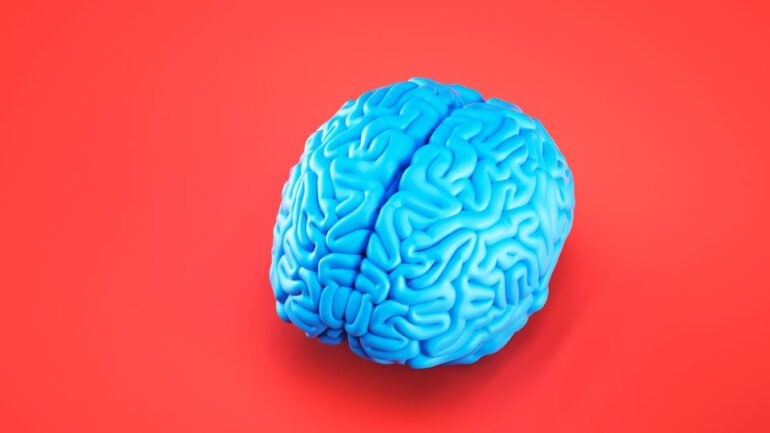TL;DR:
- Self-supervised learning models mimic brain activity patterns for understanding the physical world intuitively.
- Research from MIT’s ICoN Center highlights the potential of self-supervised learning in AI.
- These models can learn representations of the physical world, similar to how the mammalian brain operates.
- Two studies reveal self-supervised models’ abilities in predicting and simulating cognitive functions.
- The implications suggest AI could closely emulate natural intelligence.
Main AI News:
In our quest to understand the intricacies of the human brain’s intuitive comprehension of the physical world, self-supervised learning models have emerged as a promising avenue. These models, originally designed to enhance computer vision, enable computational systems to grasp the nuances of visual scenes solely through their similarities and differences, without the need for labels or external information.
Recent research from the K. Lisa Yang Integrative Computational Neuroscience (ICoN) Center at MIT sheds light on this concept. By training neural networks with self-supervised learning techniques, scientists have unearthed activity patterns akin to those observed in animals’ brains engaged in similar tasks. This discovery suggests that these models acquire representations of the physical world, enabling them to make precise predictions—an approach that may parallel the strategies employed by the mammalian brain.
Aran Nayebi, the lead author of one of the studies, underscores the broader implications, stating, “The theme of our work is that AI designed to help build better robots ends up also being a framework to better understand the brain more generally. We can’t say if it’s the whole brain yet, but across scales and disparate brain areas, our results seem to be suggestive of an organizing principle.”
These groundbreaking studies, authored by experts including Rishi Rajalingham and Mehrdad Jazayeri, are slated for presentation at the upcoming 2023 Conference on Neural Information Processing Systems (NeurIPS) in December.
Transforming Computer Vision with Self-Supervised Learning
Traditionally, computer vision models have heavily relied on supervised learning, where images are labeled with specific categories. However, this method demands a substantial amount of human-labeled data. In contrast, researchers have recently turned to contrastive self-supervised learning as a more efficient alternative. This technique enables algorithms to classify objects based on their similarities, without external labels, unlocking the potential of vast datasets, particularly videos.
Nayebi emphasizes the significance of this approach, stating, “This is a very powerful method because you can now leverage very large modern datasets, especially videos, and really unlock their potential.” Notably, these neural networks, comprising numerous interconnected processing units, adapt their connections’ strengths as they analyze extensive data to perform designated tasks.
As these models engage in specific tasks, their units exhibit activity patterns, reminiscent of the firing patterns seen in neurons within the brain’s visual processing system. This similarity has prompted researchers to investigate whether self-supervised models can mirror other cognitive functions within the mammalian brain.
Bridging the Gap Between Models and Cognitive Functions
The first study, led by Nayebi, trained self-supervised models on naturalistic data derived from everyday scenarios, enabling them to predict future environmental states. The models were then challenged with a task known as “Mental-Pong,” where they had to estimate the trajectory of a disappearing ball, akin to a cognitive phenomenon known as “mental simulation.” Impressively, the models tracked the ball’s trajectory with precision akin to that of neurons in the mammalian brain, specifically within the dorsomedial frontal cortex. This achievement marks a significant milestone, as no other computational model has matched biological data so closely.
Mehrdad Jazayeri underscores the importance of these findings, stating, “The relevance of these models to neurobiology hinges on their ability to additionally capture the inner workings of the brain. The fact that Aran’s model predicts neural data is really important as it suggests that we may be getting closer to building artificial systems that emulate natural intelligence.”
Navigating the World: Grid Cells and Spatial Understanding
The second study, led by Khona, Schaeffer, and Fiete, delved into specialized neurons called grid cells located in the entorhinal cortex. These cells collaborate with place cells in the hippocampus to assist animals in navigation. While place cells activate based on an animal’s specific location, grid cells activate at the vertices of a triangular lattice, allowing them to encode numerous positions efficiently.
Previous models relied on privileged information about absolute space, which animals lack. In contrast, the MIT team trained a contrastive self-supervised model to perform path integration while representing space efficiently. The model learned to distinguish positions based on their similarities, resulting in codes that aligned with grid cell patterns observed in the brain.
Ila Fiete highlights the significance of this work, noting, “What excites me about this work is that it makes connections between mathematical work on the striking information-theoretic properties of the grid cell code and the computation of path integration. It shows what properties might be necessary and sufficient to explain why the brain has grid cells.“
Conclusion:
The research findings underscore the transformative potential of self-supervised learning in AI development. By mimicking brain-like activity patterns, these models offer a promising avenue for creating more intelligent AI systems. This advancement has significant implications for industries reliant on AI, such as robotics, autonomous vehicles, and healthcare, as it paves the way for more capable and adaptable AI technologies that can better understand and navigate the real world.

